Yes, this is possible. I think the confusion comes from the fact that you are used to thinking about transformers being coils of wire around a magnetic core. However, that's just a good way to make a deliberate tranformer. The physical principle behind this is that every moving charge causes a circular magnetic field around it. Coils of wire concentrate the relatively weak field from the individual lengths of wire into a small area.
In your picture, the long and relatively straight transmission line wire will have a magnetic field around it proportional to the current thru the wire. If you were to run another wire close by the first wire, most of the magnetic field caused by the first wire would also go around the second wire. Since this current <--> magnetic field coupling works both ways, you would get a induced EMF in the second wire. Basically, you'd have a long stretched out air-core transformer. Deliberate transformers aren't made that way because they would be physically big.
Now imagine this transformer as the distance between the wires is increased. Less and less of the magnetic field caused by the first will go around the second wire. In transformer terms, the coupling decreases. However, it does not go to zero.
Let's say a farmer ran a wire fence to one side and underneath the power line. The coupling between the transmission line and a wire in the fence would be very poor, but with a long enough fence, could still pick up significant power. Considering the 100s of Amps flowing thru the transmission line, even very weak coupling stretched out over a long distance can be a meaningful amount. Over a mile or more, I wouldn't be surprised if you can pick up 10s of Watts with a carefully placed fence. I'd use something like a barb wire fence because you get individual conductors you can make sure are continuous, and it wouldn't look out of place if your property happened to border the power line right of way.
I admit to not having done the numbers, but it seems plausible to me.

